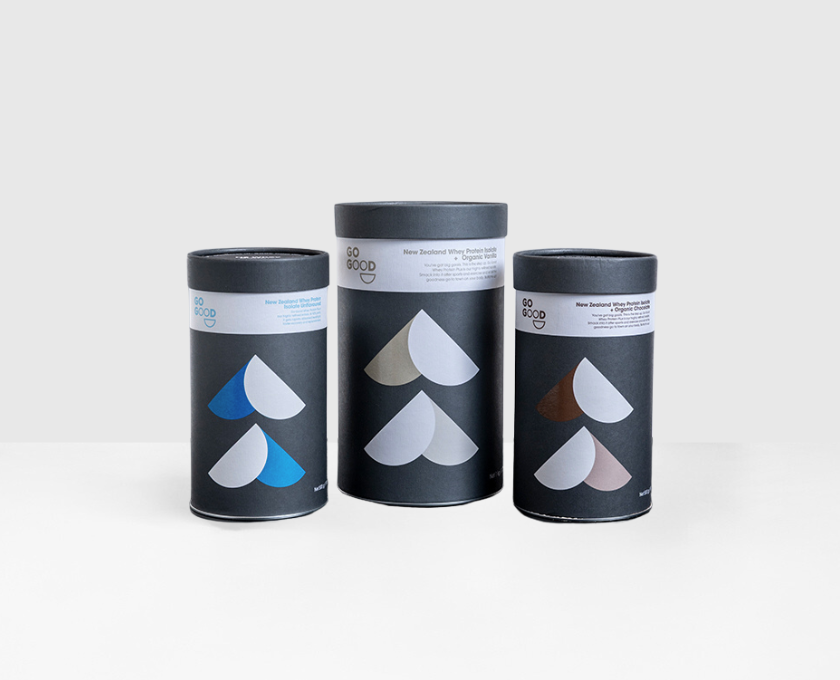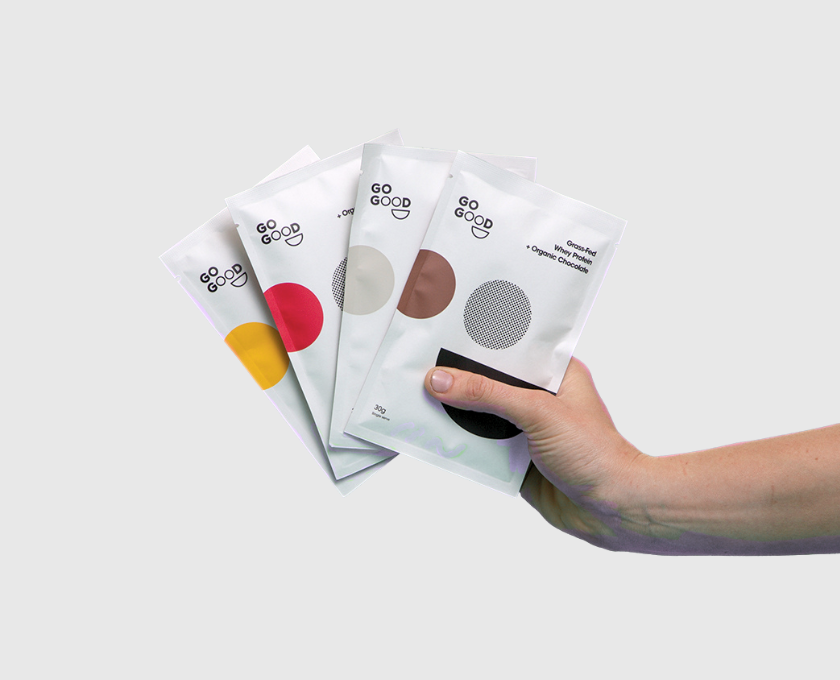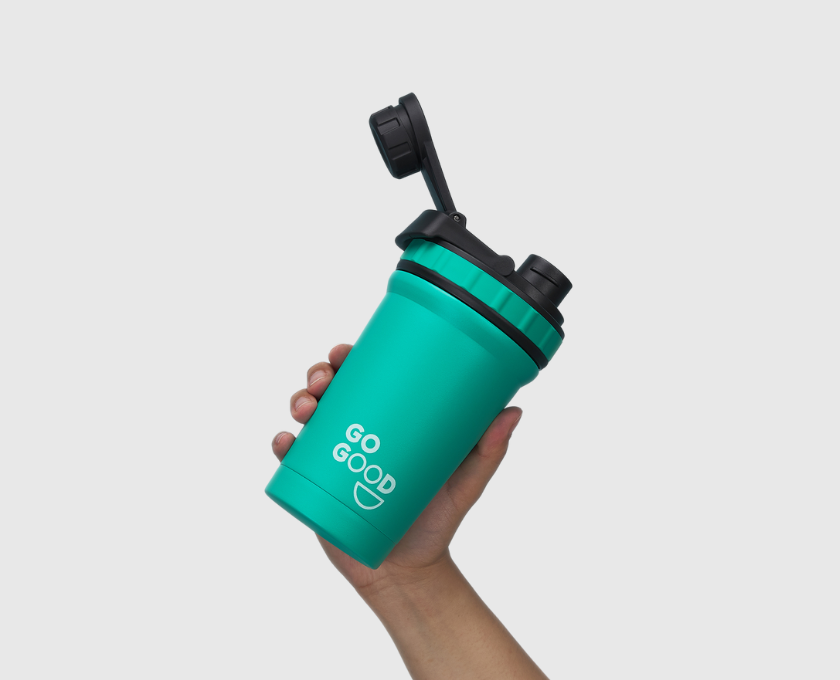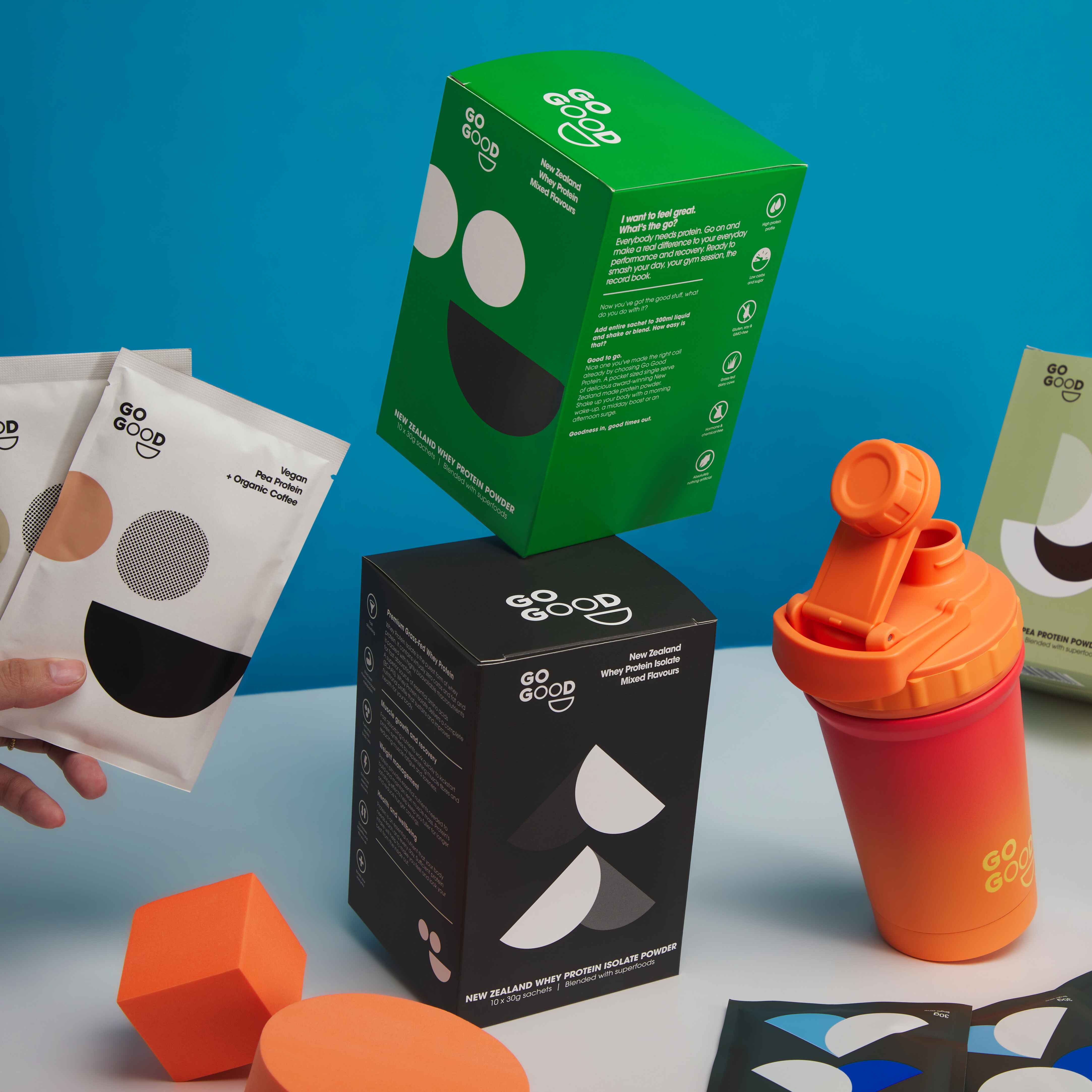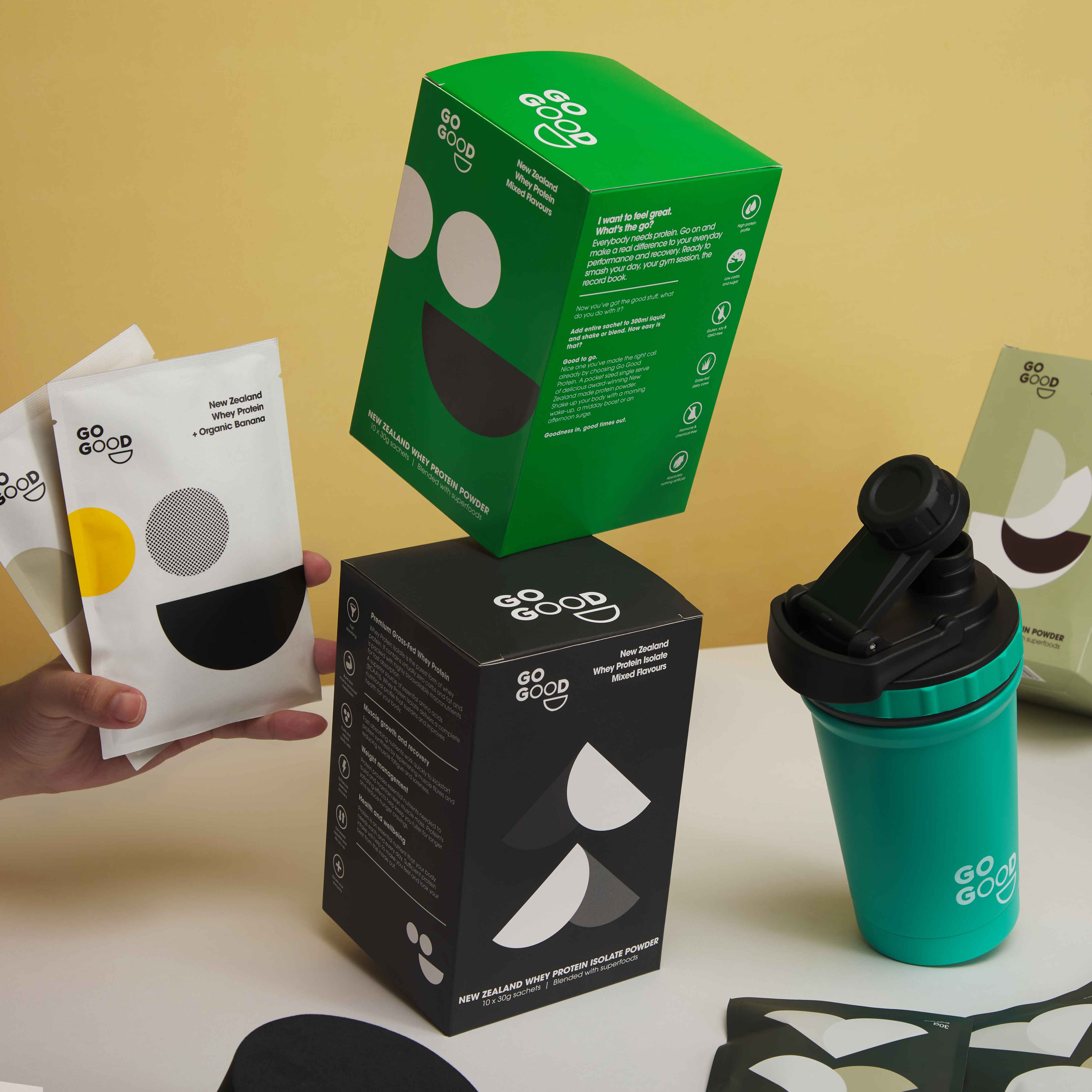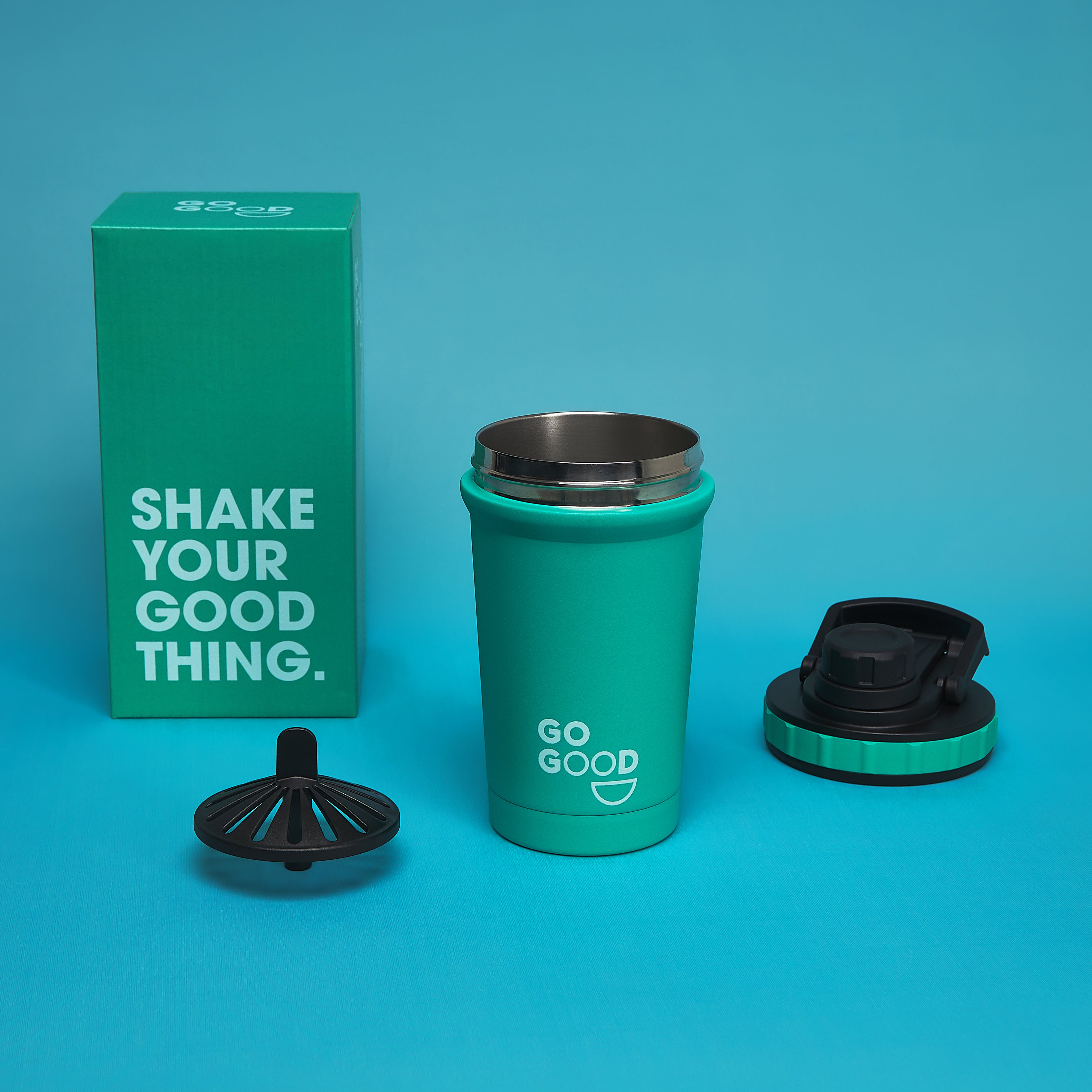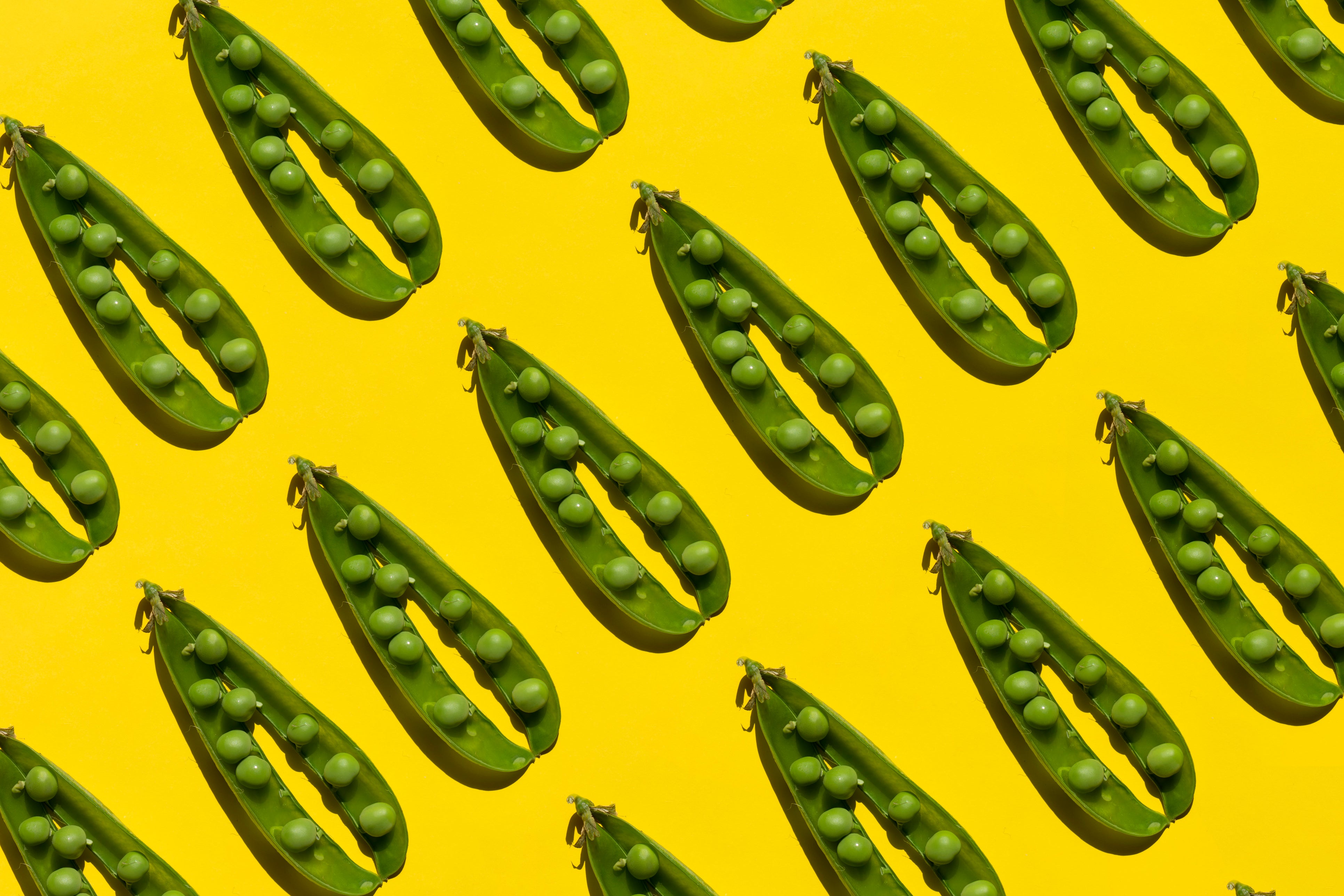Protein is an essential nutrient and one you can’t afford to neglect, even on a plant-based diet. And as we’ve also shown, you can still meet your protein requirements by using only vegetable sources - The only downside is that you’re going to have to eat slightly more vegetables.
How can we consistently hit our daily requirements of protein?
A few decades ago, you’d have to just accept that you’re most likely not going to hit your daily protein requirements as a non-meat eater. You would have to compromise your diet and ethics in some way, or risk compromising your health instead.
These days fortunately we have a solution to the problem: protein powder. And not just any protein powder, but plant-based protein powder!
Why are protein powders so good at meeting these requirements?
Plant-based protein powder is an absolute lifesaver for the non-meat eater. It allows you to consistently and conveniently hit all your daily protein requirements, but, most importantly, you don’t have to sacrifice your diet, ethics or wallet in the process! Plant-based powders also hit all of your Essential Amino Acid requirements, giving you peace of mind that all your nutritional bases are covered – and no animals are suffering!
Plant-based powders come with the built-in benefits of being low in carbs, fat and allergens – it’s a truly guilt free addition to your diet. And not only that, but there’s no cooking required, you can mix the powder with water, shake it up and you’re good to go!
Go Good’s own plant-based protein powder contains a whopping 24g of protein per 30g serving. That means you can very likely hit the 56/46g minimum threshold by supplementing just two scoops of our protein powder to your usual dietary intake. And not only that, but because it’s a pea protein, you can rest assured that all of your Essential Amino Acids are covered too!
What are the different types of plant-based protein powders?
When it comes to choosing a plant-based protein powder to best suit you, the large array of options can make choosing the best protein source rather arduous. Pea, soy, hemp, rice and Sacha Inchi protein are just a few of the main plant-proteins. In this section, we want to review the main sources of protein on the market, providing you with all the information required to make an educated choice on the powder you buy. Maybe it will be one that stands out as superior, maybe it will be a combination that will suit you best.
1. Soy protein
Most plant-based proteins do not contain high levels of all of the nine essential amino acids, soy, is one of the exceptions, along with quinoa and buckwheat. Of the plant-based protein powders on offer, soy-based products contain the greatest amount of leucine (EE) and they do pretty well when considering their amino acid composition and speed of absorption. Soy protein has a nutty taste more grainy texture when compared with whey protein. For a 30g serve, soy protein powder provides ~ 27g of protein. To consume the same amount of EAAs ingested when consuming 25 g whey protein, 40g of soy protein would need to be digested (AB).
Like many other plant-based proteins soy is limited by the EAA methionine so should not be used as the sole protein source and could be combined with the likes of hemp, corn or potatoes elsewhere in the diet (AB).
There is conflicting information out there about soy; some concern among health professionals remains that it’s consumption is unsafe. Isoflavones found in soy products have been thought to mimic the effect of estrogen and increase the risk of hormone-related cancers. These studies were however carried out in rodents, who process soy differently to humans. A recent shift in thinking has deemed soy food to be not only safe but potentially protective of cancer. The American Cancer Society claims the evidence suggests a moderate intake of whole soy foods is safe and possibly protective against cancer. The safety of soy protein isolate consumed in large quantities as in protein powder is not so well studied and therefore any supplementation should be done in moderation alongside other protein sources as part of a balanced diet. Whole soy foods remain the recommended way to consume this type of protein.
Soy protein powder also sparks a whole new debate related to its frequent genetic modification.
2. Brown rice protein
Brown rice protein powder is made by removing the majority of carbohydrates and fat from the rice product leaving a concentrated source of protein. For a 30g serve, brown rice provides ~ 24g of protein that is quickly absorbed. To consume the same amount of EAAs ingested when consuming 25 g whey protein, 39g of brown rice protein would need to be digested (AB).
Brown rice is low in the EAA lysine but has a good supply of methionine. This means it makes a good protein powder when combined with other protein sources as part of a well-balanced diet. Pairing brown rice protein with the likes of pea protein (low in methionine) at a 50/50 would yield a protein blend with a more ‘complete’ amino acid composition Brown rice protein powder is also allergen-free.
One of the real ups to brown rice protein is that is it is relatively inexpensive and accessible. However, brown rice protein powder is pretty fresh to the scene and not a lot of studies have been done. Preliminary studies suggest that it could be as successful as a whey protein powder in improving body composition and exercise performance.
3. Hemp protein
Hemp protein powder is made from hemp seeds and has a subtle nutty flavour. Hemp is around 50% protein and each 30g serves provides ~15 g of protein so is therefore much lower in protein content than the likes of brown rice, soy and pea protein. To consume the same amount of essential amino acids ingested when consuming 25 g whey protein, 48g of hemp protein would need to be digested (AB). Therefore if you are using this protein powder for building or repairing muscles, you will need a much larger dose.
Hemp protein is lacking when you consider its composition of essential amino acids. However, its main asset is its healthful nutrition package. Hemp is a great source of dietary fibre, healthy fatty acids as well as iron, zinc and magnesium.
Similar to brown rice, hemp is low in the amino acid lysine so consuming it as part of a diet containing pea and soy proteins would ensure a complete amino acid composition is obtained.
4. Pea Protein
Pea protein powder is a great low-allergen option for all plant-based goers, including gluten-free, lactose-free and dairy-free. It is an easy to grow resource, and despite it being available for years, is growing in popularity. Pea protein powder is made using dry peas as they are higher in protein content than green peas. Dry peas may be green or yellow and are rich in phytochemicals which are thought to provide health benefits.
Peas have a protein content of around 75-85% and each 30g serve provides around 23g of protein. To consume the same amount of essential amino acids ingested when consuming 25g whey protein, 37g of pea protein would need to be digested (AB).
Pea protein contains a great level of amino acids, particularly, the essential branched-chain amino acids (BCAAs) leucine, isoleucine and valine. These amino acids help energise the muscles and signal the body to begin muscle growth and repair through a process called muscle protein (AF). Like soy protein, pea protein is limited by the essential amino acid methionine.
Similar to Hemp protein, pea protein boasts a rich nutrition package. Peas are a great source of fibre, vitamin K, manganese, folate, copper, phosphorous and also contain vitamins B6, B2, zinc, magnesium, iron, and potassium.
5. Sachi Inchi protein
Sachi Inchi seeds, which are also referred to as ‘Inca Peanuts’ have grown in the Amazon Rainforest of Peru for centuries. Like pea protein, it is a dairy-free, gluten-free option that is very well digested. So if you’re someone who may have struggled to digest protein powders in the past, Sacha Inchi Protein Powder could be a good option for you.
Sacha Inchi protein powder is most noted for its great omega-3 fatty acid profile. It also contains some omega-6 and omega-9 and has a balance of these fatty acids that supports inflammation and other disorders.
Despite its long history of use, not much is known about Sacha Inchi protein. In a 28g of serve of Sacha Inchi protein powder, there is 17g of protein. One serve of protein powder also provides you with around 16% of your daily iron requirements (AD).
Thinking of going plant based?
Receive 15% OFF your first order with code PLANT at the checkout. International shipping available on all orders. Free shipping in NZ on orders over $99. Shop now!



